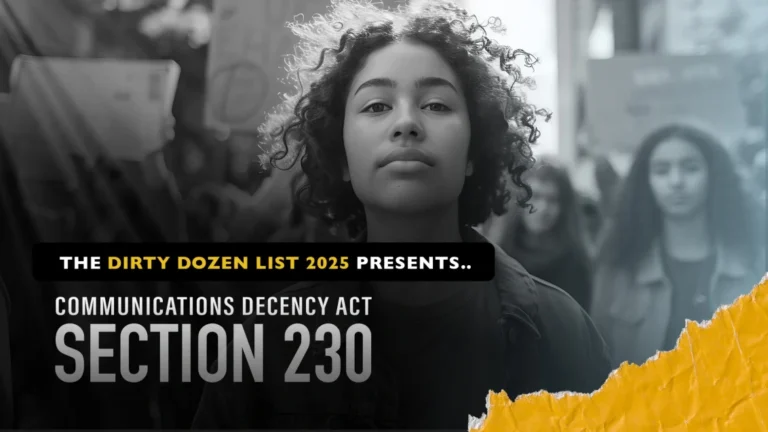Adolescents everywhere are being affected by sexting and pornography, and at increasingly younger ages. Two middle schools in Virginia have seen this firsthand as multiple lude images of students, including one with a topless livestream were uncovered by the police. The sharing of sexually explicit photos, videos, or messages – or sexting – is not uncommon among adolescents.
As the technological acumen of today’s youth extends beyond what most adults are able to foresee or control, youth are easily exposed to numerous platforms where sexualized content and hardcore pornography are normalized, easily accessible, unfiltered, and widely distributed.
The unfolding of the technological revolution has led to a culture where adolescents are spending increasing large amounts of time on social media sites and other online platforms, causing experts to be alarmed. This is a population whose brain development is too young to think critically or make rational decisions for themselves.
Recently, an international team of over 100 researchers found myriad harmful impacts associated with the all-pervasive use of the web, including development of mental health and behavioral problems.
The concern over technology inundation has been considered internationally as countries such as France put a ban on mobile phone use anywhere in schools. We are not proposing a ban, although it is critical to help young people understand the harms that can occur when technology use is unchecked.
Two concerns bred from a lack of technological oversight of youth: the growing popularity of viewing Internet pornography and engaging in sexting. Despite the unhealthy consequences, some argue that these are normal actions.
Youth & Pornography
The viewing of pornography among youth has grown rampantly.
- As a 2017 Australian study with participants age 15 – 29 found that 100% of males and 82% of females had ever watched pornography, and that 84% of males and 19% of females watched pornography on a weekly or daily basis.
- Furthermore, a 2016 European survey with 4,564 male and female high school students aged 14-17 found an estimated 30% of teenagers under age 18 watch pornography regularly, with the majority being males. Of the estimated 30% of teens who watched pornography regularly, 34% acknowledged they had pressured a partner into kissing, touching or intercourse, and 17% admitted to forcing a partner into kissing, touching, and even rape.
- In fact, multiple studies have shown correlations between exposure to pornography and sexual aggression, coercion, violence and perpetration among males, and experiencing sexual harassment or violence among females.
With millennials as the first generation born into the technological revolution, in its nascent phase we are discovering the damaging toll viewing pornography and sexting can take on a young person’s development, and how it can gravely impact the course of their lives.
As many have observed first-hand, children often model the behavior they see. Exposure to pornography allows them to witness degrading, violent, and abusive acts toward women. This exposure normalizes such exploitative behavior, especially to a young, underdeveloped mind, and provides a script for modeling such behavior. This presents adolescents with dehumanizing and distorted perceptions of women and engenders a dangerous portrayal on how they should manage intimate relationships and even casual interactions.
Youth & Sexting
Sexting provides one illustration of how adolescents model the behavior they see online (e.g. creating sexually objectifying images and/or pornographic images of themselves).
Indeed, youth often merge what they see on social media and the Internet with how they should behave in real life. Pornography and sexting fundamentally intersect as reports indicate heavy associations between regular viewing of online pornography and significant increases in minors sexting. The 2016 study referenced above indicated many young people perceive watching pornography and sexting as interchangeable and emphasized that sending sexual images was ‘common’ and ‘normal.’
The normalization of sexting presents us with a major concern surrounding the overall health and well-being of our youth.
- Research suggests those who practice sexting experience harmful effects, including feelings of terror, fear, stress, difficulty concentrating, appetite changes, distrust in others, and isolation.
- Furthermore, there are numerous reports of suicide as a result of involuntarily disseminated sexual messages or images, and a study on adolescents ages 12 – 18 indicated those who sexted were 5.27 times more likely to have attempted suicide.
The season of adolescent mental, physical, and emotional development leaves them highly susceptible to sexual exploitation and abuse, as the brain is still under the influence of visceral impulses. During this stage of development, adolescent brains are set to be more impulsive, chart unfamiliar territory, and to risk-taking and thrill-seeking. Surely many of us can look back on our own adolescent years and recall those characteristics that make one so vulnerable—the impetuous thinking, confusion, lack of foresight and judgment, eagerness to fit in, and the illusion of invincibility and knowing-it-all.
Now, consider how much more dangerous this becomes when it is matched with today’s normalization of hypersexualized material—most of which is saturated with violence and abuse?
For the sake of our next generation, we must take strides to stop the normalization of pornography and sexting before we are inundated with a world where sex is no longer understood in the context of love and affection, but instead violence, abuse and exploitation.
Be involved in the fight against sexual exploitation. Get educated on the dangers of sexting and pornography. Start by talking to your kids early and often about the harms of sexting. Help them understand the long-term impacts sexting can have.
More information on the harms of sexting as well as a guide on how to talk to your kids about sexting can be found here.


